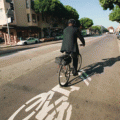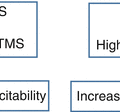Dementia
MCI
Moderate
Severe
End stage
Memory loss
Short term
Most short term and some long term
Most short and long term
Almost all short and long term
Functional loss
IADLs
Most IADLs and some basic ADLs
Basic ADLs
Bed bound
Executive functions are controlled by the frontal cortex; thus, the decrease of volume and function of this region explains the reduction of these functions. Language comprehension, especially of complex texts, is based on working memory, and this decreases in the elderly due to the brain atrophy of hippocampus, a structure of the medial temporal lobe involved in memory formation [17].
In dementia usually there is an alteration of memory or orientation functions associated with at least one of the following impairments: language, perception, attention, apraxia, problem-solving and abstract thinking.
41.12 Neuropsychological Assessment and Rehabilitation
The neuropsychological rehabilitation is the branch of the rehabilitation medicine that aims to rehabilitate cognitive impairments and the resulting limitations in daily living activities and social participation in patients suffering from disorders of the central nervous system.
The neuropsychological rehabilitation is based on a preliminary assessment consisting in a battery approach, which involves tests of a variety of cognitive ability area, such as memory, attention, processing speed, reasoning, judgement, problem-solving and spatial and language functions.
The main steps of the neuropsychological evaluation are the collection of medical history, the clinical interview with the patient and family members, administration of cognitive and functional assessment instruments, analysis and interpretation of the results from the tests and preparation of the report aimed at the construction of an individual rehabilitation plan.
The Mini-Mental State Examination (MMSE) is a very useful tool for analysing the general framework of cognitive impairment in a patient suffering from mental illness, particularly in dementia [18]. A viable alternative to the MMSE in the primary care setting can be the administration of the clock-drawing test (CDT) and the Mini-Cog test. The CDT is performed by giving the patient a sheet of paper with a large (relative to the size of handwritten numbers) pre-drawn circle on it and instructing the patient to draw numbers in the circle to make it look like the face of a clock and then draw the hands of the clock to read “10 after 11”. The score ranges from 1 to 6 with higher scores reflecting a greater number of errors and degree of impairment. A score of ≥3 represents a cognitive deficit, while a score of 1 or 2 is considered normal [19]. The Mini-Cog test is a 3-min instrument to screen for cognitive impairments in older adults in a primary care setting. The Mini-Cog uses a three-item recall test for memory and a simply scored clock-drawing test (CDT). It is as effective as or better than established screening tests and faster than the Mini-Mental State Examination. It detects many people with mild cognitive impairment (MCI).
41.13 Functional Assessment
In a hospital setting, the functional assessment of patients with dementia is generally performed by administering the Barthel Index (BI), which is one of the most widely used rating scales for the measurement of activity limitations in patients with neuromuscular and musculoskeletal conditions.
For outpatient, functional status assessment begins with a review of the two key divisions of functional ability: ADLs and instrumental activities of daily living (IADLs). The two instruments for assessing ADLs and IADLs, respectively, are the Katz ADL scale and the Lawton IADL scale.
41.14 Pharmacological Therapy in NCDs
An appropriate drug therapy of NCDs requires the knowledge of the disease aetiology.
Medications can revert the underlying cause of dementia in only a small percentage of cases (potentially reversible dementia). Generally, drugs can only slow the course of an irreversible dementia, such as the tacrine in Alzheimer’s disease, or prevent worsening of the disease, such as aspirin for vascular dementia. Psychotropic drugs could revert depression or behavioural symptoms associated with dementia.
In irreversible forms of dementia, the treatment focuses on maximizing the residual functions of the patient, to restore some of the lost functions and to educate and support the family and caregivers [20].
41.15 Rehabilitation of Dementia
The global outcome of the individual rehabilitation plan (IRP) for the patients affected by NCDs is to keep him/her autonomous and safe in the execution of ADLs and IADLs for as long as possible. In the early stages of the disease, it was observed that learning is possible by giving appropriate support, leading to the hypothesis that cognition-based interventions, including reality orientation therapy (ROT) and non-specific cognitive training, could exert beneficial effects [21].
Four rehabilitative approaches for the people with dementia were described [22]:
Reality orientation and skills training approaches
Emotion-oriented approaches
Behaviour-oriented approaches
Stimulation-oriented approaches
The first approach aims to address cognitive deficits, whereas the other three aim to maximize patients’ mood and to reduce the impact of behavioural problems, such as aggression or incontinence.
The ROT aims to improve orientation and behavioural skills through cognitive activities and interpersonal and social interactions, combined with the use of aids and facilities to assist in encoding, storing and retrieving information. With repeated multimodal stimulation (music, visual, verbal), the ROT could reinforce the patient’s information about his/her personal history and space/time orientation. The ROT was designed from Folsom in 1958 and later developed by Taulbee and Folsom in the 1960s as a rehabilitation approach targeted to patients confused or with cognitive impairments [23]. In particular, the interventions aimed to reorientation in time consists of stimulating memory skills through the use of writing supports to encode/retrieve data about the day, month and year, or holidays, or other meaningful events in patients’ life; spatial reorientation is preferentially obtained by stimulating the encode/retrieve of meaningful meeting place for patients, using verbal cues to reinforce memory. Moreover, several aids, such as digital watches with 24-h dial, specific signs placed in various rooms (e.g. bathroom, kitchen, bedroom, etc.) for orientation around house, should be useful in order to enhance encoding/retrieving activities.
During a session of ROT, the therapist repeatedly presents basic personal and current information to each patient beginning with the patient’s name, where he or she is and the date. When the patient has relearned these basic facts, others are presented such as age, home town and former occupation [22]. Generally ROT is applied as a group therapy (4–6 patients with similar cognitive impairment), where caregivers are trained to give treatment at home. The number and duration of sessions are variable, ranging from 45 to 60 min for two to four times a week [24].
In addition to this formal modality, an informal ROT approach is required, consisting of the introduction of temporal and spatial facilities in the patient’s environment with the involvement of caregivers and/or family members. The best candidates to ROT are patients with mild to moderate cognitive impairment, without sensory and/or behavioural disorders that may affect compliance to rehabilitation programmes.
Skills training aims to help patients to improve cognitive functioning, albeit only temporarily, in an attempt to stop or slow cognitive decline. The memory training is done by an operator in the presence of a caregiver, and it consists of performing daily activities, such as self-care, clothing, cooking, communicative strategies and so on. The duration of a single session of skills training ranges from 8 to 45 min.
Cognitive training is useful for the treatment of specific cognitive impairments based on individual and group sessions, including computer training. The latter is reserved to patients affected by MCI aiming to stimulate and enhance sustained and selective attention and visuospatial associative memory. Cognitive training is performed using board games that increase brain function, such as Advanced Progressive Matrix (or Raven’s Progressive Matrix, RPM), puzzles and computer games. Each session has to be conducted in a neuropsychological laboratory, for a duration of 60 min. Speech rehabilitation is common to treat language impairments in patients affected by NCDs. It consists essentially of stimulation of the spare capacity and the use of the compensatory strategies of communication and provision of appropriate education and counselling of the patient and family members.
Another option to treat language impairments in patients with moderate to severe NCDs is music therapy. This approach is based on musical activities, both vocal and instrumental, designed to acquire cognitive abilities that facilitate the retrieving process and enhance verbal and non-verbal communication skills. The duration of each one-to-one session is 1 h. However, it is possible to perform a group session of music therapy in case of mild to moderate NCDs.
Global reactivation therapy (GRT) is another cognitive stimulation intervention based on 12 group sessions, of 1 h each performed three times per week. It consists in training memory, attention, language, reasoning and learning strategies in order to preserve temporal orientation as well as personal autonomy.
Considering that current evidences suggest that, for people with NCDs, ADL skill training can promote independence in personal care tasks and social participation [25], occupational therapy (OT) should be considered a gold standard for the management of these patients. The OT aims to stimulate functional capacity (e.g. hand dexterity), cognitive abilities (e.g. attention, learning) and creativity using a variety of materials and turning them into finished products through manipulative and decorative techniques. The rehabilitative intervention is carried out in an outpatient setting and lasts 1 h per day for 4 weeks.
The methods used in rehabilitation practice are commonly based on empirical approaches.
41.16 Rehabilitation of Delirium
Delirium management includes pharmacological and supportive therapy and rehabilitative approach [26]. Environmental monitoring of intensive care and pain management are milestones of the conservative treatment. Fluid, electrolyte balance and nutrition should be evaluated and eventually given carefully.
The most commonly used medications are haloperidol, α2-adrenergic receptor agonist (dexmedetomidine, clonidine) and sedatives.
The environment should be quiet (i.e. using earplugs for sleeping) and well lighted. Caregivers and family members should be encouraged to reinforce the patient orientation.
During daylight situations of sensory deprivation must be avoided, correcting sensory deficits, if necessary, with eyeglasses and hearing aids.
Hyperactive type of delirium is characterized by agitation, fear and perceptual impairments. Physical restraints, if possible, should be avoided. These patients should always be supervised and, if possible, assisted by a family member.
Stay updated, free articles. Join our Telegram channel

Full access? Get Clinical Tree





